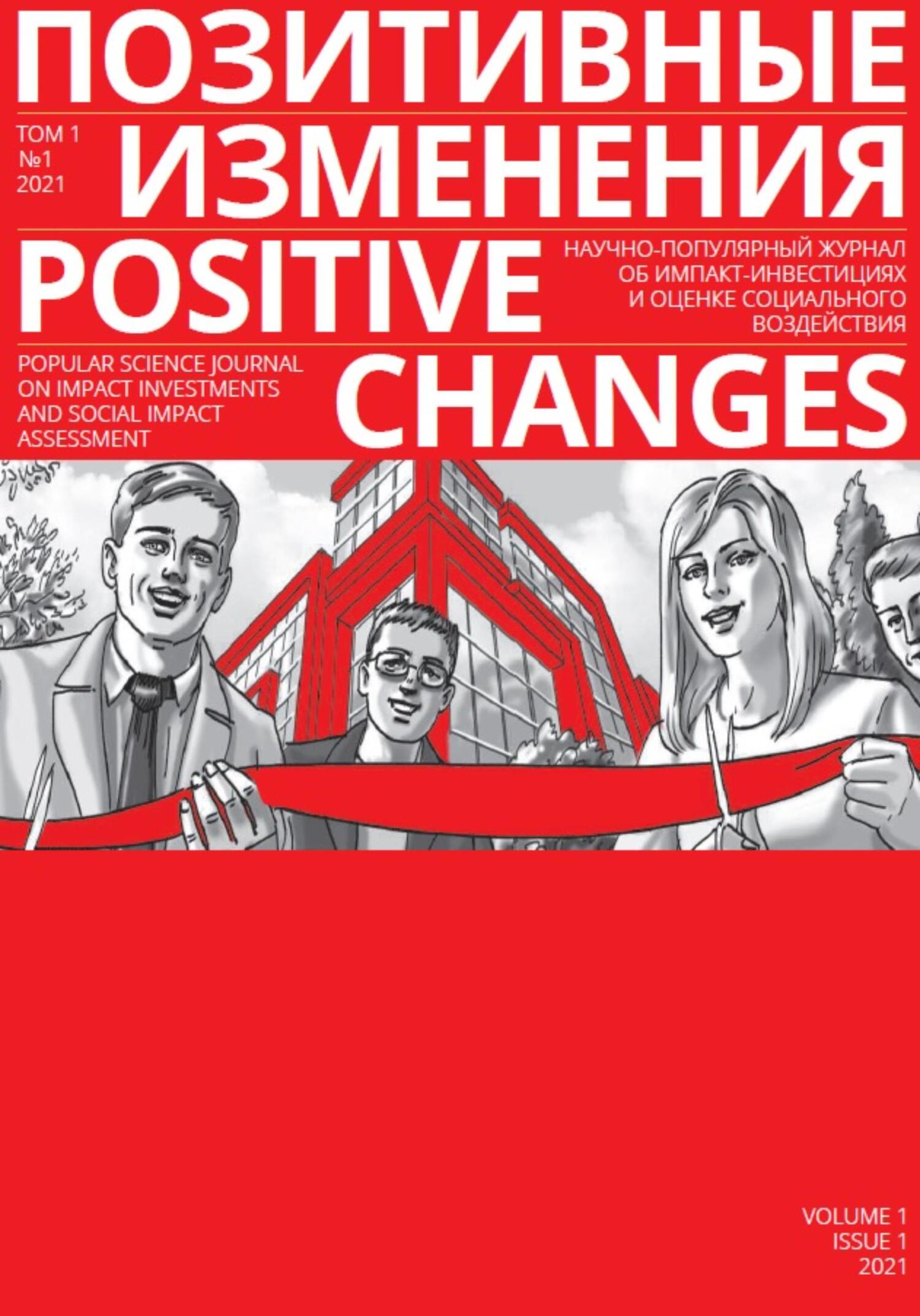of the characteristics of the activity itself (the number of services provided, the audience covered, etc.).
If we try to analyze the present day Russian representations of key concepts related to valuation, it is worth quoting the position of experts from one of the associations of evaluation market players actively working towards the development of systemic solutions in the field of state programs and projects — the Accounts Chamber of the Russian Federation, as well as the Center for Advanced Management Decisions. In the manual on the theory of change, prepared in partnership by experts of these organizations, the following definitions are given [A. I. Kim et al., 2020]:
• immediate results (outputs) — specific products formed as a result of direct state influence and possible for use by target audiences (charity recipients);
• response (react) — the reaction of charity recipients to the use of immediate results (including in the form of behavior change);
• final results (outcomes) — a set of significant changes that the charity recipients experience after the use of immediate results;
• final impacts — desired medium- and long-term social and economic changes.
Outputs are the results that organizations can directly measure or evaluate, while outcomes are broader changes, benefits, and knowledge that can be gained in the medium to long term.
We cannot but mention in this context the approach of the Global Impact Investing Network (GIIN) in connection with the publication by this organization in November 2020 of a new evaluation methodology, presented as the first of its kind recommendation that allows the use of unified approaches and comparison of any projects with each other (Methodology for Standardizing and Comparing Impact Performance). It is worth noting, however, that this methodology is applicable to use by social investors, in order to select investment projects. Within this methodological guide, it is proposed to distinguish the following levels of evaluation: “outputs — short term outcomes — long terms outcomes". Outcomes analysis within this methodology should be built at several levels:
• Scale: number/coverage of stakeholders who received a result (outcome).
• Depth of impact: the degree of change obtained by stakeholders.
• Exposure time: the period of time during which the stakeholder continues to experience the result.
• Volatility: the degree of variability (change) of results over time.
Table 2. Basic terms and definitions related to impact and evaluation
It is worth paying attention to the removal of the “impact" category beyond the limits of the impact chain evaluation in the GIIN approach described above. We can say that such a position is common and represents a trend in the modern sense of the term. This, in particular, is noted by one of the leading international experts in the field of academic research for project and program evaluation, the author of the concept of 4 Strategies, Alnur Ebrahim [Ebrahim, 2019].
Thus, if we proceed from the global modern trends in this concept definition, we can say that the impact concept is becoming more and more “common noun", defining in general the whole range of concepts related to the project results description, with the exception of only immediate results. We also recommend using this understanding in the language corpora to develop a model for evaluation the social and economic impact of social projects. This is the definition used in this paper.
THE THEORY OF CHANGES AS THE BASIC PROBABLE COMPONENT OF THE MODEL FOR SOCIAL PROJECTS ASSESSMENT
One of the most researched and described in the scientific literature basic constructs and bases of evaluation is the concept of the Theory of Change (ToC) of the project, which is a clear and precise description of the alleged relationships between the causes (actions) and the expected effects (results) that are planned to be achieved under project, indicating the conditions for achieving each of the levels of results. The Theory of Change explains the reasons why certain approaches to solving the problem are used, as well as how these approaches will lead to the desired changes.
As noted by A. I. Kuzmin, the author of the first Russian-language publication on the Theory of Changes, ToC can be used as a tool for solving a whole range of problems [A. I. Kuzmin, N. A. Kosheleva, 2014]:
• As a project results describing tool;
• Design tool (project design intent development);
• A way to visualize the project intent;
• A way to justify the causal relationship between project activities and their results;
• A way to define project impact boundaries;
• Basis for the formation of a project monitoring system;
• Basis for project evaluation;
• A way to “archive" good practices in a generalized form.
Traditionally and in its most general form, the Theory of Change is most often presented in the form of a map of expected results, showing how the actions under project will lead to the achievement of the project goal, and a list of assumptions or conditions under which this “theory" will work, which the authors of the project expect to comply with and which, at the same time, are beyond their influence.
The Theory of Change is one of the most common tools used to describe the social technology of a project, for the purpose of its subsequent evaluation. In other words terminology wise, it can be attributed specifically to the field of projects and programs evaluation. It has been actively studied in this area. So, you can find various classifications of types of ToC, approaches to its development, including specialized software, author developed approaches to assessment based on ToC, etc.
The Theory of Change development can be called one of the universal tools used in project evaluation.
EVIDENCE-BASED APPROACH IN SOCIAL PROJECTS ASSESSMENT
Another fundamental term is closely related to the Theory of Change theme. It is the evidence based approach of the social technology applied in a particular case. Generally speaking, the evidence-based approach is an approach based on the application of research methods, on the search and study of arguments that confirm that the set of actions






